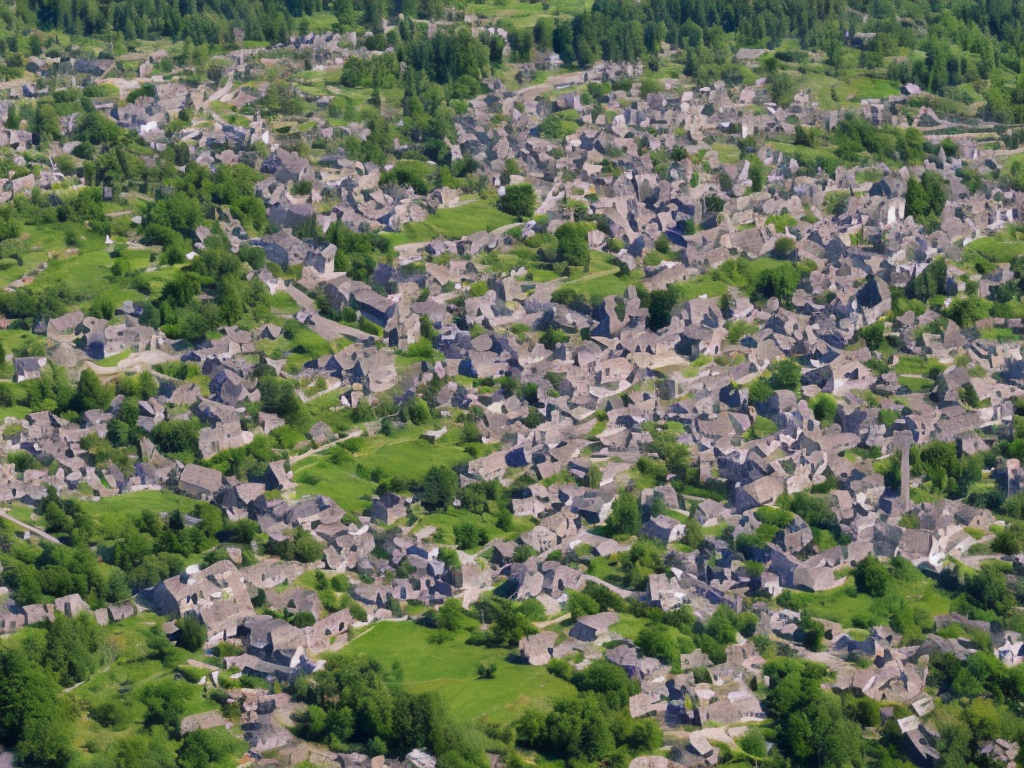
Difference Between A Town And A Village
When discussing the difference between a town and a village, it is important to first understand that these terms can be subjective and their definitions can vary across different regions and countries. However, there are some general characteristics that can help us differentiate between the two.
One of the main differences between a town and a village lies in their size and population. Generally, a town tends to be larger and more densely populated compared to a village. Towns often have several thousand residents, whereas villages typically have several hundred or even fewer inhabitants. This disparity in population size is reflected in the infrastructure, amenities, and services available in each.
In terms of infrastructure, towns often have a more developed and comprehensive array of facilities compared to villages. This includes a wider range of shops, markets, and supermarkets offering various goods and services. Additionally, towns generally have a greater number of public amenities and institutions like hospitals, schools, banks, and administrative offices. Due to their larger population, towns can support a wider variety of businesses and establishments, providing residents with more options and opportunities.
On the other hand, villages have fewer amenities and services due to their smaller population. They might have only one or two local shops, often providing basic necessities such as groceries. The limited population in villages means that specialized services, such as hospitals or educational institutions offering advanced courses or specialized training, are usually absent. Consequently, villagers may need to travel to nearby towns or cities to access these facilities.
Another distinguishing aspect between towns and villages is the level of social and community interaction. In villages, the sense of community and close-knit relationships among residents is often more pronounced. People in villages generally know each other well and often have long-standing relationships and shared experiences. This can create a stronger sense of unity and community engagement. In contrast, towns may be more diverse and transient due to their larger population. While this provides an opportunity for interacting with a wider range of people, it can also lead to a reduced sense of community spirit and personal connection.
The economic activities and livelihoods in towns and villages can also differ significantly. Villages often rely on agriculture, fishing, or other traditional practices passed down through generations. Agriculture typically plays a major role in village economies, with residents engaging in activities like farming, poultry rearing, or fishing. The close proximity to nature and the land often shapes the lifestyles and traditions of village communities.
In contrast, towns are often more economically diverse, with a greater range of opportunities and employment options available. Towns act as commercial centers, attracting businesses due to their larger consumer base. As a result, towns may have a mix of industries, services, and trade activities. They might be home to factories, workshops, offices, and other businesses that provide employment opportunities in various sectors, such as manufacturing, technology, finance, and administration.
Transportation and connectivity are vital factors that also differentiate towns from villages. Due to their larger population and economic activities, towns usually have better road networks, public transportation systems, and connectivity. They are often situated along major highways or railway lines, facilitating easy access to nearby cities and towns. Villages, on the other hand, may have limited access to transportation infrastructure. They might have only narrow roads or no public transportation, making it more challenging to travel to distant locations.
The overall pace of life and lifestyle could also be distinct between towns and villages. Villages are often associated with a slower, more relaxed pace of life compared to towns. Life in a village is usually centered around agriculture and traditional practices, often influenced by close community bonds and traditions. In contrast, towns tend to have a faster pace of life, with more opportunities for entertainment, cultural events, and recreational activities. Towns may offer a diverse range of cultural experiences, such as theaters, cinemas, museums, and sports facilities.
It is essential to note that while these characteristics are generally associated with towns and villages, there can be exceptions. In some cases, towns may still preserve a small-town feel with a strong sense of community, whereas some villages may have expanded and developed to the extent that they possess a range of amenities similar to towns. Additionally, the perception of what constitutes a town or a village can also differ depending on cultural, historical, and administrative factors. Different countries or regions might have different criteria or definitions for categorizing settlements into towns or villages.
In conclusion, towns and villages can be differentiated in terms of their size, population, infrastructure, amenities, economic activities, community connections, transportation, and overall pace of life. While towns tend to be larger, more developed, and offer a wider range of opportunities, villages often maintain a smaller population, preserve a close-knit community, and rely on traditional practices. Understanding the differences between towns and villages helps to acknowledge the diverse characteristics and dynamics of different settlement types and aids in appreciating the unique qualities each has to offer.
 Self-Instruct
Self-Instruct